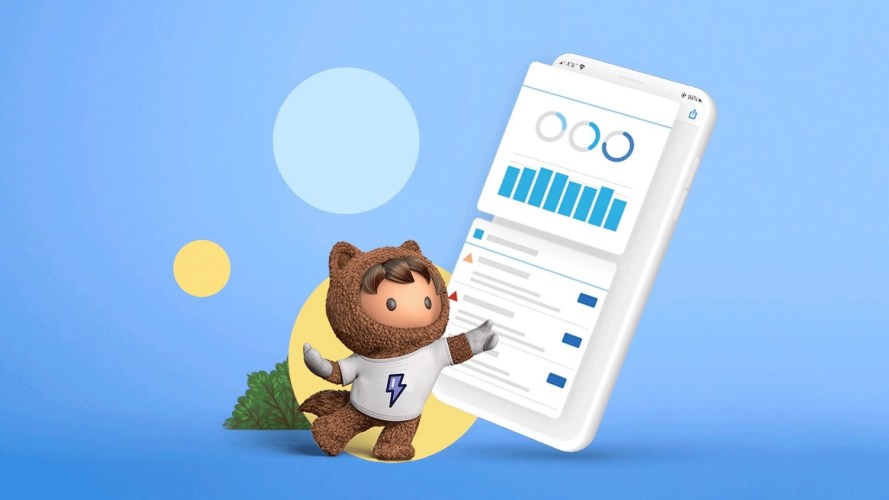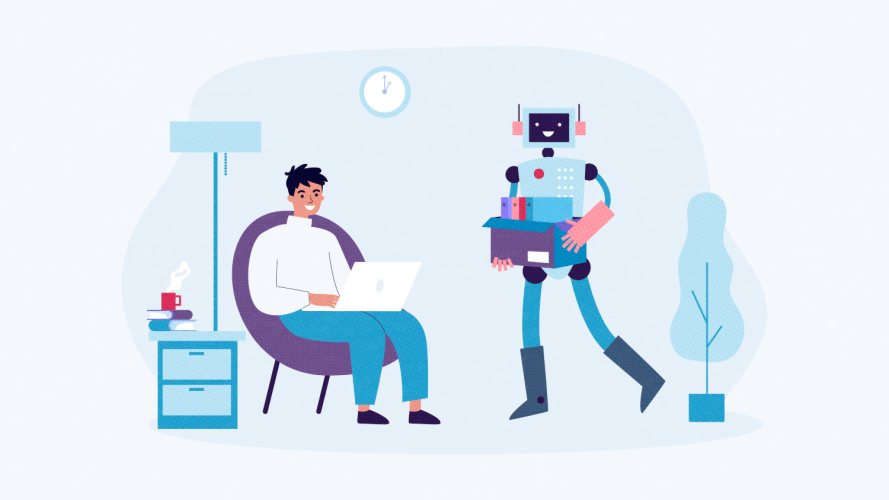5 Ways IT Leaders Can Reimagine Employee Experience



It's time to prioritize employee experience, reimagine the workplace, and enable everyone to work from anywhere.

Jo-ann Olsovsky
This is the first post in a new series called Employee Experience Reimagined, where we explore how company leaders are instrumental in building employee experience through technology.
Employee experience (EX) is the underrated gold standard to company success. We know this first-hand at Salesforce, and we recently partnered with Forbes Insights to take a closer look at the relationship between employee experience, customer experience, and revenue. It turns out that when customer experience improves, so does revenue — and 89% of executives at high-performing companies agree that employee experience directly leads to better customer experience. To make the fastest financial gains, you need to start first with your employees.
The intersection between employee experience and IT becomes even more important as we collectively weather a global pandemic. Harvard Business Review Analytic Services helped us understand this in a joint study earlier this year. The study found that 85% of companies that highly value EX felt well-prepared when COVID hit because they had the technology and systems already in place to equip their employees for remote work. There’s never been a more important time than now to prioritize employee experience, reimagine your workplace, and enable everyone to work from anywhere.
Who owns employee experience?
When most people think of employee experience, they tend to think of company culture and benefits. While those aspects tell part of the story, we see from today’s research that technology is considered a critical enabler of EX, which directly leads to company profit and long-term resilience.
Both IT and human resources play critical roles in shaping employee experience; HR powers EX through culture and development, while IT powers employee experience through technology with seamless digital touchpoints.
Think of it this way: Formula One race cars are created for performance. They’re aerodynamic, built for speed, and fine-tuned to maneuver curves on the track. If your employees are trying to drive your business forward, are you going to give them a Formula One race car, or a commuter car? By tightening up your technology stack, your employees sit in the driver’s seat of a vehicle built to perform.
Here are 5 ways IT leaders can supercharge employee experience:
In the coming weeks, our Employee Experience Reimagined series will highlight five key areas where you can shape employee experience for direct impact and lasting results.
1. Automated workflows: build processes that move your employees forward
Eighty-one percent of IT organizations choose to rely on automation so they can focus on innovation. IT teams automate repetitive processes and coordinate tasks across departments, allowing your customers and company to thrive. Using point-and-click tools, you can design guided experiences throughout the entire employee lifecycle, like setting up 30-60-90-day emails for new hires. Automation nixes the mundane and paves the road for employees’ creative and strategic work.
2. Online learning: upskill your teams at scale with a custom online training platform
Outstanding onboarding results in 82% higher employee retention rates and 70% more productivity, which contribute to strong employee experience. You can develop custom training and development at scale for employees anywhere with an online learning platform like myTrailhead. This saves time for your hiring managers and HR teams, who are able to assign a wide range of training courses – annual compliance training, new manager training, and business and technical skills training — all with the option to customize modules to your company’s unique brand and culture.
3. Safety and wellbeing: keep your workplace safe with technology
We’ve seen the global coronavirus case trackers, but IT can also enable employee safety at microscale for your company. With a wellness check tool, like the one found in the Workplace Command Center, you can see important insights across your organization in order to make data-driven decisions to keep employees safe and maintain wellbeing. Manage workplace safety with confidence so that you can take action and ensure your data, people, and workplace are all kept safe.
4. Integrated helpdesk: help employees help themselves
A digital self-service helpdesk lets employees find answers to common questions quickly and easily. This eliminates the hassle of responding to repetitive inquiries, so departments can focus on cases that require hands-on assistance. With a go-to resource for the most common questions (How do I reconnect to the VPN? How do I contribute to my 401K?), employees will get the answers they need fast, saving them time to do their best work.
5. Collaboration: unite your teams no matter where they are in the world
As remote work becomes commonplace, digital collaboration becomes critical. Staying connected through chat, video calls, and file sharing enables employees to collaborate in real time and continue to serve customers around the globe. Even for companies that aren’t planning to shift to remote work permanently, collaboration tools fuel productivity, which 62% of executives rate as a top priority.
With higher productivity, less employee turnover, and more profitability, now is the time to invest in IT’s crucial role for EX strategy and its measurable impact on the bottom line. By giving your teams the right technology to get their jobs done, you ensure employees are equipped with a winning vehicle to drive your business forward.
Explore how you can drive employee experience at your organization by:
- Visiting the Employee Experience resource page
- Listening to how IT leaders digitally transform employee and customer experience
- Reading our second post in this series on how technology can power employee safety and wellness























